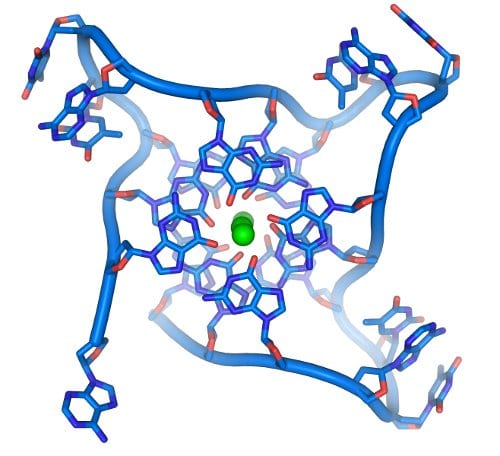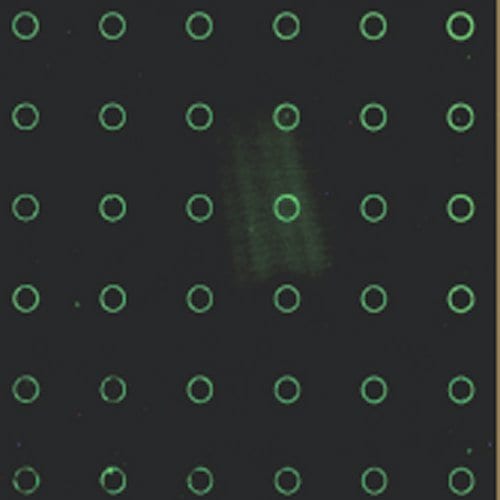Tim Long and co-workers provide a broad overview of established and ongoing work in the area of DNA nucleobase-modified polymer synthesis.


Tim Long and co-workers provide a broad overview of established and ongoing work in the area of DNA nucleobase-modified polymer synthesis.

Microbarcodes embedded with rare earth nanocrystals show promise for disease detection and biomedicine.

Ring-shaped arrays of DNA by using a simple self-assembly process driven by a balance of different forces, by scientists in the USA and S. Korea.

Edge-hydrogenation of carbon electrodes could further the quest for solid-state, single-molecule DNA sequencing.

Nuclease activity can be detected by a simple, sensitive, and selective test based on light scattering of carbon nanotubes, with no need for a label.

Fabrication of microlasers using all edible components.

With FDA orphan drug approval secured, Amal and his team are preparing for phase 1 clinical trials of their small-molecule drugs in 2026.

The effects of aging on the human brain could be slowed down with the help of artificial intelligence.

Scientists created flexible probabilistic bits from custom polymers, offering a new, energy-efficient path for AI and machine learning using classical physics.

“We’ve essentially reworked the standard recipe for making organic light emitting diodes, like those found in smartphones.”